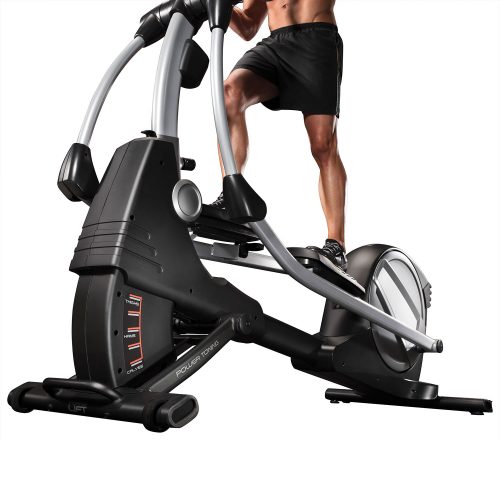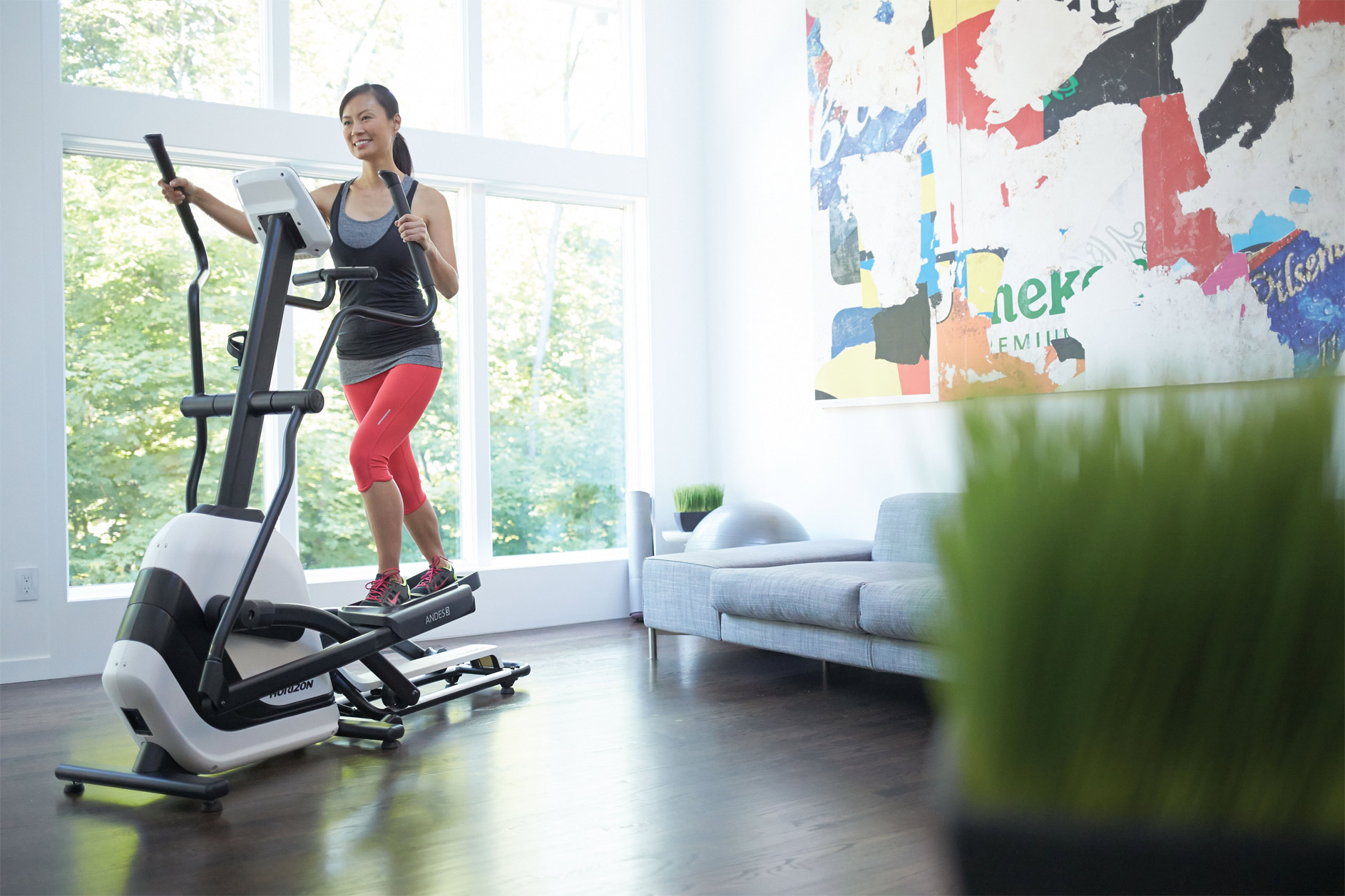 In today’s fast-paced world, it isn’t always easy to find the time to head to a gym and get in a good work out. That’s the reason more and more people are choosing to bring the gym experience into the home with various fitness machines. And, elliptical training, in particular, is becoming one of the fastest growing categories in the fitness world, because it combines the best of stair-climbing, cross-country skiing, and running in a low impact, and variety-rich workout.
In today’s fast-paced world, it isn’t always easy to find the time to head to a gym and get in a good work out. That’s the reason more and more people are choosing to bring the gym experience into the home with various fitness machines. And, elliptical training, in particular, is becoming one of the fastest growing categories in the fitness world, because it combines the best of stair-climbing, cross-country skiing, and running in a low impact, and variety-rich workout.
Before purchasing an elliptical you will want to ensure you’re choosing one that is right for you, your space and your goals. This guide will give you some insights into what to consider before making a decision on an elliptical. Consider an elliptical whether you are looking to add home cardio exercise for health, to help lose weight, as a stress release, build strength after an injury, for convenience, or just to look and feel great; an elliptical can be just the key to get you on track to kill your fitness goals.
What is an elliptical?
Ellipticals are named after the easy foot motion produced which mimics the movement of walking or running while protecting the joints from impact. Why would you choose an elliptical? There are three answers that come quickly to mind. A home elliptical can comfortably provide you with an amazing cardio workout while reducing the chance of impact injuries. It’s a very intuitive machine, most users can get going with little or no instruction. And, since most ellipticals encourage you to move both your upper and lower bodies, you will maximize your workout to burn more calories.
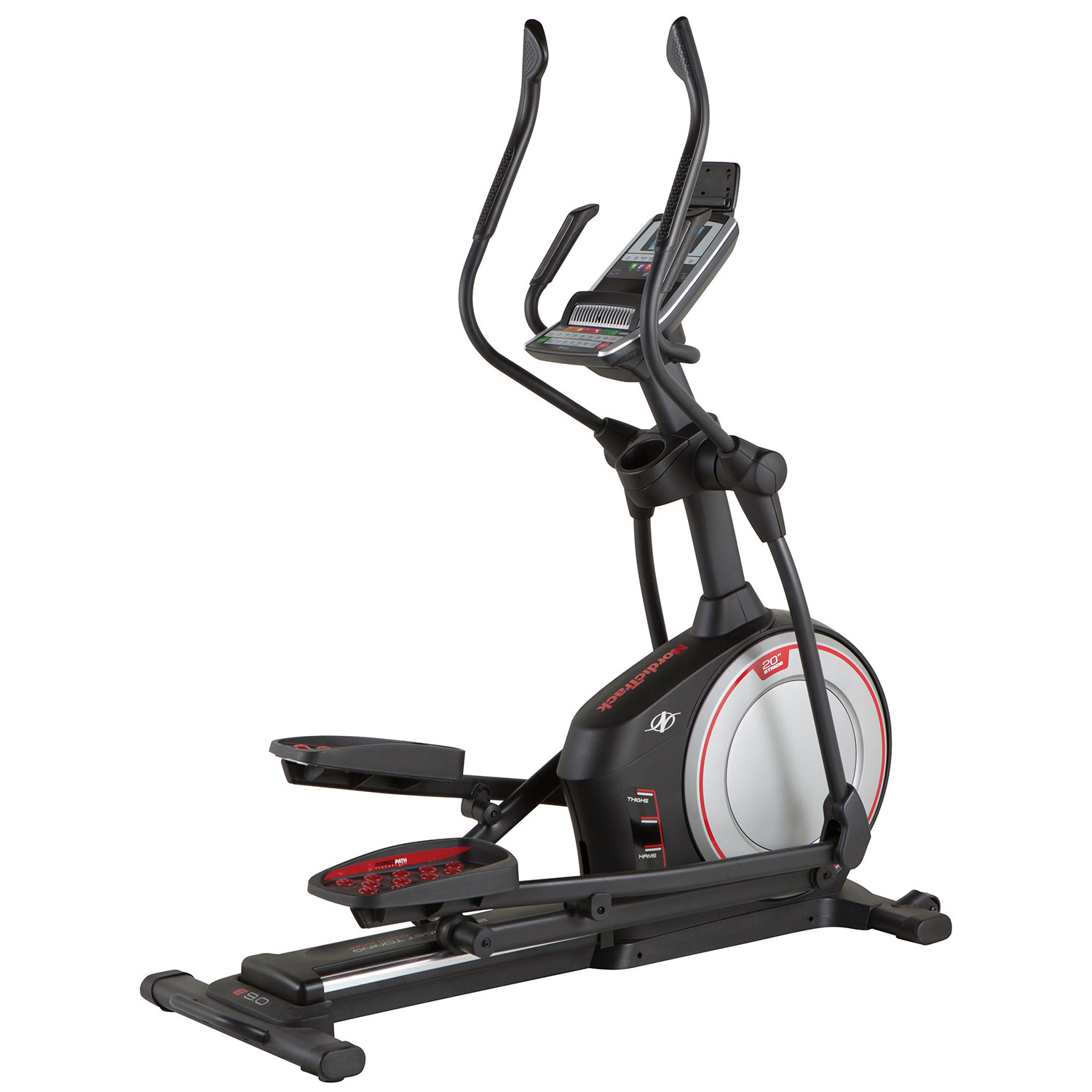 Ellipticals can mimic the motion of running (and walking up stairs) with minimal impact, because unlike a treadmill, an elliptical trainer uses pedals that are attached to the deck, keeping a person’s heels in contact with the pedals, reducing muscle and tendon stress. Exercisers move fluidly and can have a lower Relative Perceived Exertion (RPE). In other words, the person does not feel like they are working as hard as they actually are. Plus, the machine’s moving handgrips and adjustable resistance also allow you to create a more intense, full-body workout.
Ellipticals can mimic the motion of running (and walking up stairs) with minimal impact, because unlike a treadmill, an elliptical trainer uses pedals that are attached to the deck, keeping a person’s heels in contact with the pedals, reducing muscle and tendon stress. Exercisers move fluidly and can have a lower Relative Perceived Exertion (RPE). In other words, the person does not feel like they are working as hard as they actually are. Plus, the machine’s moving handgrips and adjustable resistance also allow you to create a more intense, full-body workout.
So, if you’re looking for an exercise machine that’s ideal for your home, because you’d like to work on getting healthier and happier, back in shape, or just need a quick cardio workout to combat a stressful day, then an elliptical trainer may be exactly what you need.
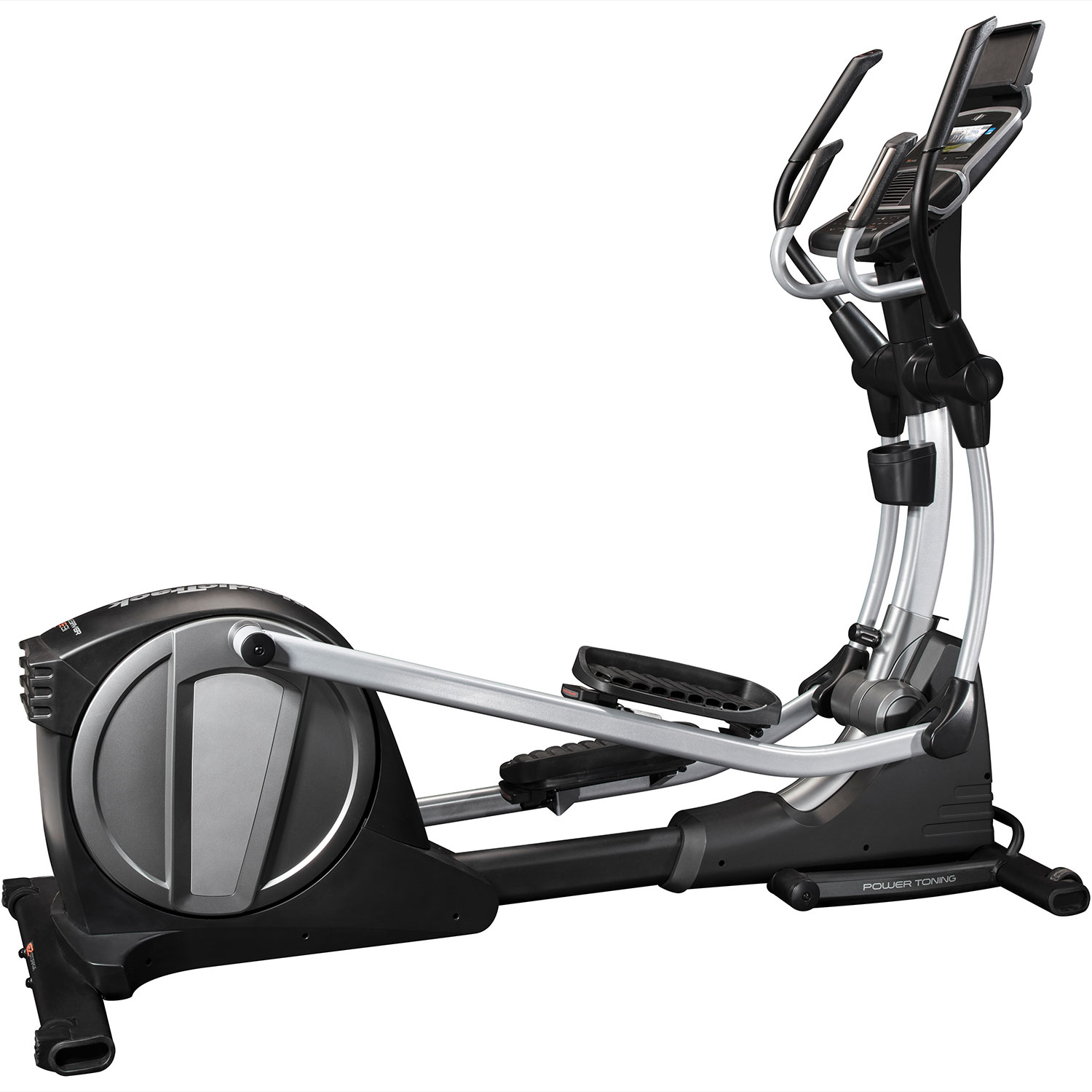
Connected elliptical help you reach your fitness goals faster
Many ellipticals now fall under the category of Connected fitness equipment: with the use of an app and by signing up to a monthly subscription you can access online instruction, tailored and motivating fitness classes, and even online coaching services. This adds a whole new dimension to a home gym; participate in group classes and feel the exhilaration and intensity of personalized instruction without leaving your home. Learn more about Connected fitness in this recent article on the blog.
Features to look for in an Elliptical Machine
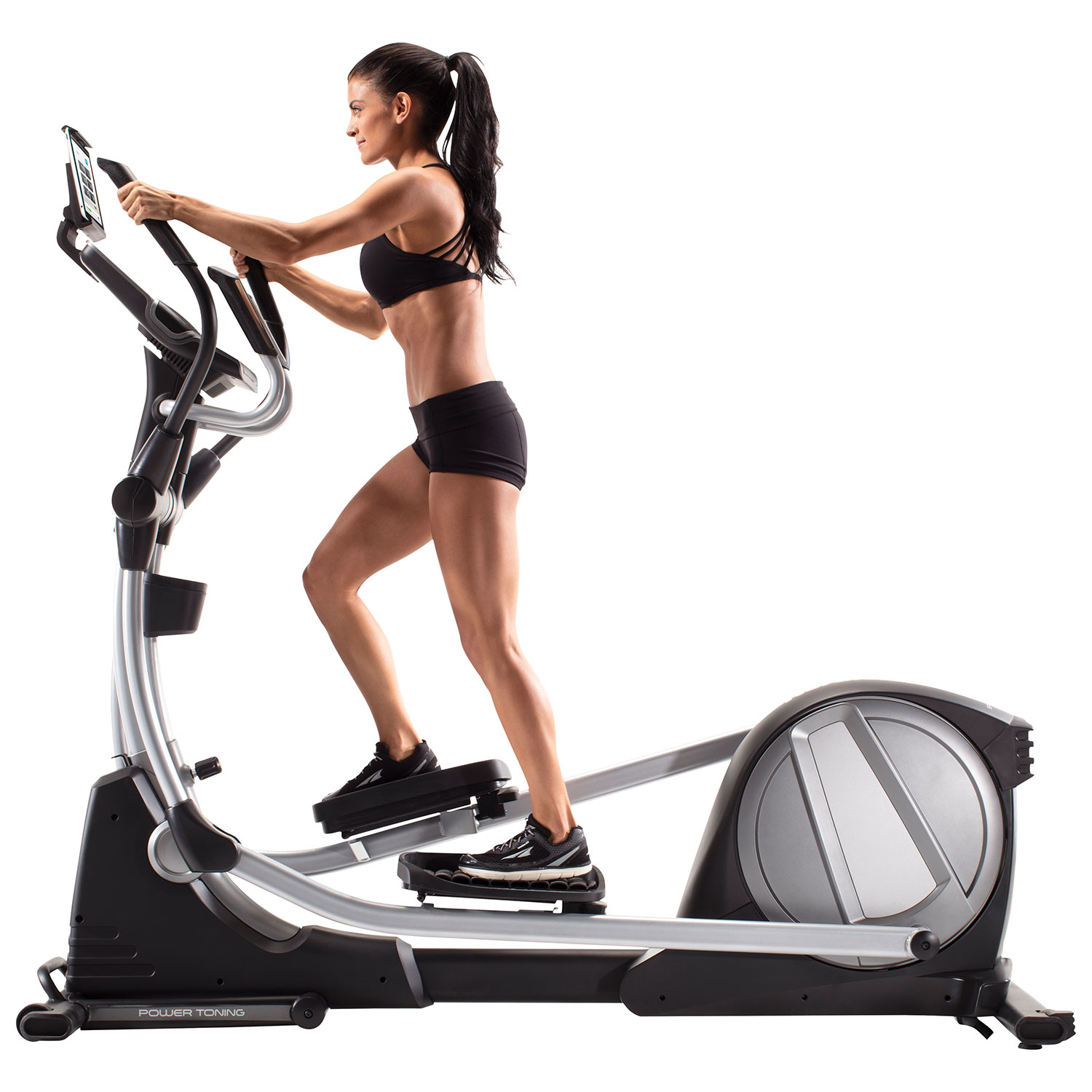
Here are some of the “must-have” features you’ll need to look for when considering an elliptical. The first thing you need to determine, is what kind of space is available in your this home gym. There’s no use buying a giant elliptical machine if you have no place in which to use it. So, look at things like size, and whether the elliptical trainer is foldable, or easy to move.
If you’re planning to set it up in a spare room you might want the ability to fold up the unit and wheel it away when company comes. Look for machines that fold, have wheels to help facilitate easy moving and some that even stand on end once folded to take up even less space.
Next, look at the machine’s resistance capabilities, range of movement, noise of machine, and programs. All ellipticals have variable resistance. Make sure the lowest resistance setting is easy to pedal and it becomes challenging to pedal at about 75 percent of the highest setting. This will provide some room to grow.
Resistance in an elliptical machine is most usually controlled by a flywheel and magnets. The heavier the flywheel and the stronger the resistance options, the smoother the motion and the more challenging workouts a machine can provide. Keep in mind that this increased weight will also increase the weight and typically the cost. Automatic resistance controls adjust the current to the electromagnet with the push of a button, whereas manual resistance means you will need to interrupt your workout in order to adjust.
Ellipticals will generally have their flywheel at the front or rear and some are now starting to feature a centre drive flywheel.
A rear-drive elliptical is known to more closely simulate a jogging motion with a bit longer stride length. Units with a rear drive flywheel are generally a bit quieter and have less moving parts than front drive ellipticals resulting in less servicing requirements.
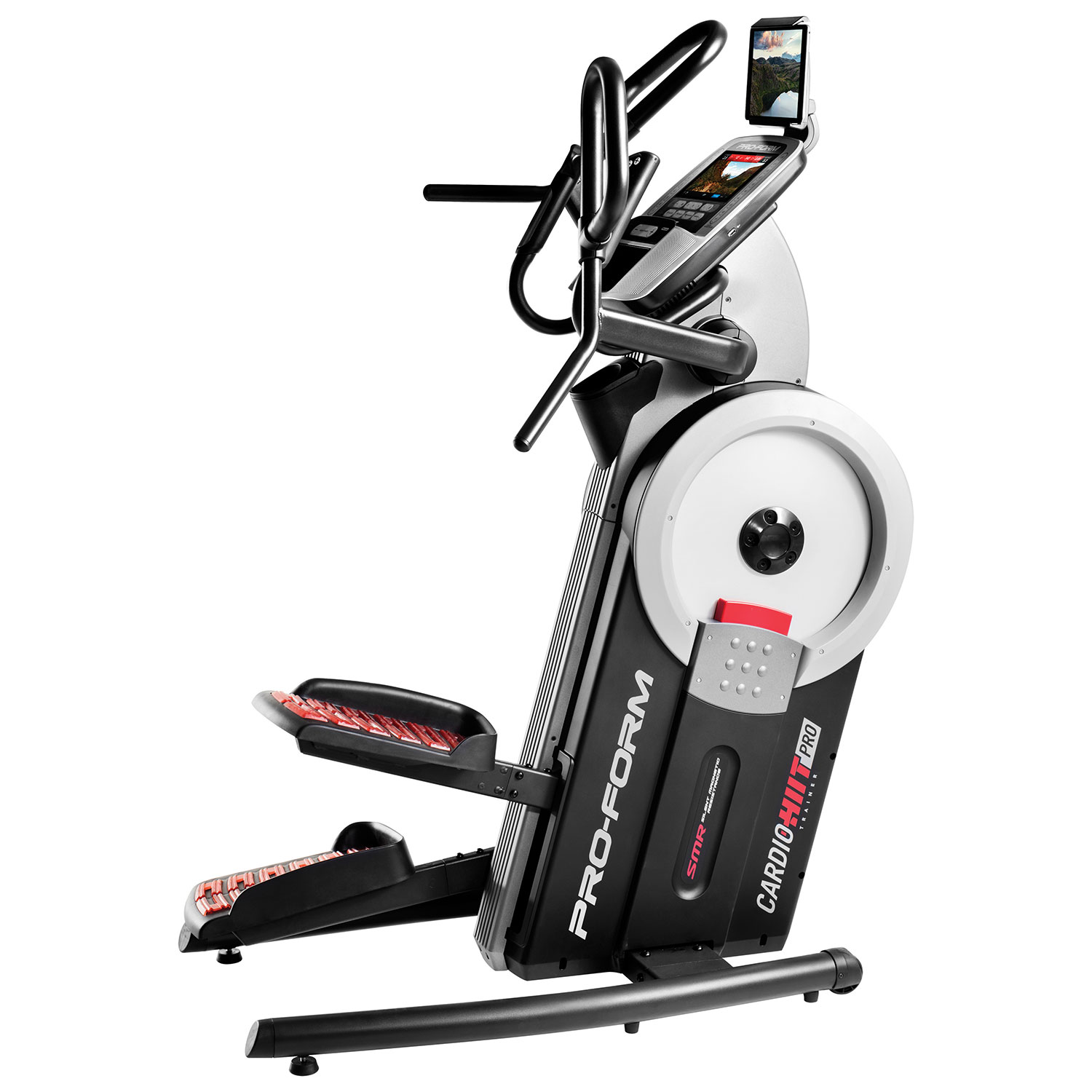
Front-drive ellipticals tend to have user’s weight more forward, similar to stair climbing. Often front drive machines take up a bit less space and getting on and off of a front drive elliptical is easier since you won’t have to step over the machine.
Some newer units have smaller centre flywheels on each side of the pedals. This balances the machine with easy access to the pedals, often filling a smaller footprint with a smooth and relatively quiet operation.
There are more factors to consider than resistance. It’s important to think about what will work best in your home and to help you achieve your goals. How will you use your new elliptical?
Do you have a specific muscle group you’d like to target? If you’re training for a race like a full or half marathon you might want a unit that most closely imitates jogging so you can incorporate low impact training days in between outdoor runs. Or, if you’re wanting to create a booty to make the Kardashian’s jealous, then you might want to look for a unit with incline capabilities or that has both elliptical and stair climbing motions.
Does the elliptical have a “stepping” motion? A stair-stepping machine and elliptical, although similar in appearance, are used in very different ways and provide you with different types of workouts. If an elliptical also provides a stepping movement, you’ve just doubled your exercise variety right there! Also, if the machine offers a “reverse” motion, you not only add versatility to your exercise program but also greatly reduce the risk of repetitive use injuries common with some treadmill and stair climber users. Most ellipticals have this option, though. Adjustable incline is also very important, and what makes an elliptical a true cross-training machine, as adjusting the incline varies the focus on muscle groups and provides a great way to add variety to the routine.
If you live in a condo or have small children who still nap, you might prioritize finding a quiet machine. Think about the weight and location of the flywheel, also consider getting an extra dense mat for under the unit. Not only will it cut down on the noise, but it will also protect your flooring.
If you’re taller, you will likely have a longer stride length. For people up to 5’7”, a stride length of 16-18 inches is standard. For people 5’7” to 6’7” will likely be more comfortable with a stride length of 20-21 inches.
If you’re really serious about building your cardiovascular endurance, you will want to ensure you get your heart going. Some machines have heart rate monitors built into a grip sensor that will help you ensure you stay within your target range.
For High-Intensity Interval Training (HIIT) or Tabata training, the heart rate monitor is a good gauge and easy adjustability of resistance/incline will ensure you get the most out of your home workouts.
Check the suggested maximum weight capacity. Buying a machine that isn’t sturdy enough to support the weight of the people using it will simply lead to increased servicing, noise and poor performance.
Setting yourself up for success
Whether you’re starting a new fitness regime, moving your workout home or just upgrading your home gym, everyone can use a little bit of motivation to stick to their plan and achieve their fitness goals. Keeping your activity convenient, challenging and fun are all good steps to staying on track.
Check out the console. A standard console will give you electronic feedback showing distance, time and speed. Many consoles will also display incline, calories burned and pulse. It’s through the console that you will be able to control things like magnetic resistance, incline and utilize pre-set programs.
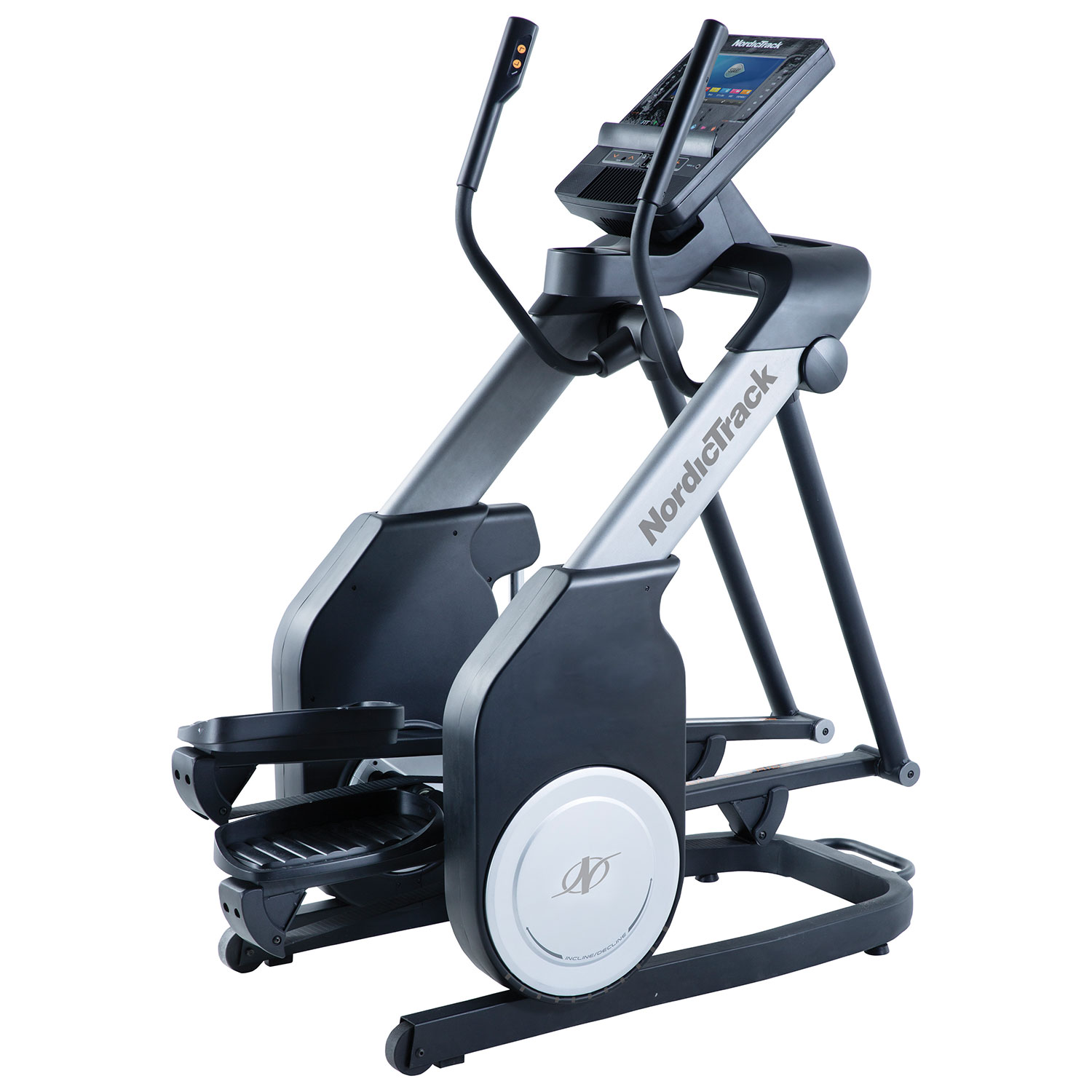
If you like a lot of variety, you will want to check the number of preset programs. Some consoles will give you the ability program in your own workouts or even download programs and workouts from the internet. Many of these high-tech consoles will give you the ability to set up a user profile, remembering your preferences and assisting you in tracking your progress.
Staying comfortable is key, if you’re planning to get sweaty you might appreciate a built-in cooling fan, an easy to access water bottle holder and a good place to put a towel.
If you want to stay entertained or connected while keeping fit, look for units with a shelf to hold your smartphone, tablet or favourite magazine. You might need music to get in the zone, look for built-in speakers. You might even consider setting your elliptical in front of a mounted television or a peaceful view out a window.
Look for a machine that feels smooth and runs quietly, as well as something that offers pre-set and custom programs (to alleviate boredom, add variety to workouts, and customize a cardio program that’s right for you). And, make sure your new elliptical offers a heart rate monitor, so you can track your progress and intensity, and avoid injury.
Caring for your Elliptical
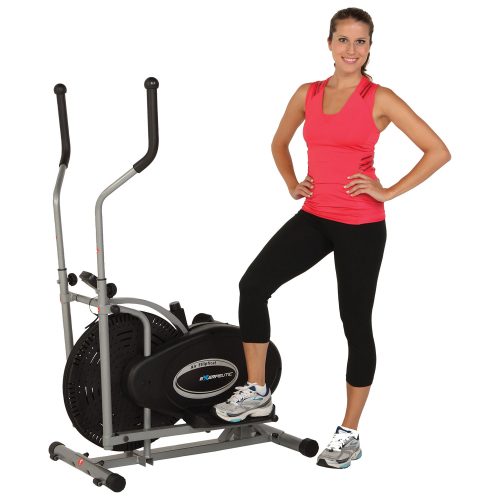
Once you’ve invested in a home elliptical machine, you will want to take good care of it. Plan to wipe down the machine after each use with a lint free cloth dampened with a non-abrasive cleaner and ensure the stride rails are free from dirt or debris. It’s also recommend to vacuum around the moving pieces to ensure dust and lint do not get into the moving parts. Check your manual for care instructions, it should give you details on when and how to properly lubricate the machine.
Still want more information before investing in an elliptical for your health and well-being? Okay, take a look at these frequently asked questions (FAQs):
Elliptical FAQ
What kind of an elliptical do I need if I’m going to use it once per day vs. once per week?
It’s not about the elliptical machine, but really about your own fitness goals. The elliptical trainer is most effective when used regularly and at a high enough resistance to challenge you. No matter how often you want to use an elliptical trainer, the machine can help you achieve a low impact, and high cardio workout, every time. Which machine you choose ultimately depends on the space you have available, and the features you require.
What’s the difference between an elliptical and a crosstrainer?
Ellipticals are also sometimes called crosstrainers. However, a true elliptical “crosstrainer” is one in which the armhandles move, providing a better and more complete upper body workout.
What if I want a sturdy machine, but I don’t have a lot of room? Can I find an elliptical that is right for me?
Think about looking for a center drive elliptical since these machines often have a smaller footprint, ensure the weight capacity is sufficient and look for a good rubber floor mat to provide stability on uneven or slippery flooring.
Which muscle groups are getting a workout on an elliptical?
With a crosstrainer machine, you are getting a workout for your upper and lower body muscles, as well as your core… and all with very low impact to your knees, joints and back.
Will my wearable fitness device track my activity on an elliptical?
On certain models, you can pair your wearables, smart phones or tables with the elliptical machine, and download data, or upload various training programs.
How much workout do I get from the arm movement?
Sure, your lower body does get more of a workout on these machines, however the machines do indeed flex and work your elbows, upper arms, biceps, triceps, shoulders and chest. But, remember, an elliptical workout improves muscle endurance rather than building muscle bulk.
How much should I expect to pay?
You can pay anywhere from $500 to $2,500 for an elliptical, but remember you get what you pay for mostly. Think about the features that are important to you. The flywheel and console have the biggest impact on price as well as performance and goal tracking.
How many years will an elliptical work for me?
There are many factors that go into the how long an elliptical will last, this is strongly influenced by the amount and conditions it is used under. Regular maintenance and a clean environment are the best way to extend the life of your new elliptical.
What is the difference between running on a treadmill and using an elliptical?
Because you are actually running in place on a treadmill, you run most of the same risks for injury as when you are out for a jog. That repetitive “pounding” of the pavement jostles and shocks your knees, hips and other joints, potentially causing injury. With an elliptical, your feet and heels are on pedals, which mimic the motion of running, but in a low impact fashion, so you minimize the risk of injury.
What should I look for in the warranty?
Warranties are something many people forget to look for, but they are very important as the warranty stands as an indicator of quality and the trust that the manufacturer has in their own product. Warranties vary based on many factors, but most brands offer a lifetime warranty on the frame. I’d also look for parts and labour on basic trainers to go for at least 90 days. For a standard or elite trainer, look for one to five years warranty.
Should I be concerned about safety? Do all machines have an auto stop function? Can I lock the machine so my small children can’t turn it on?
There is a risk of children getting pinched by an elliptical’s moving parts, so it is recommended that you keep it in a closed off room. Otherwise, you can also opt for a product that features a locking pin which keeps the pedals and handlebars from moving until it is removed. Others offer child safety guards, or electronic locks that keep that parts from moving.
Take the next step
Are you ready to begin a healthier, more active lifestyle? Take a look at BestBuy’s elliptical section to find the perfect elliptical for your home.
The post Elliptical Buying Guide appeared first on Best Buy Blog.


